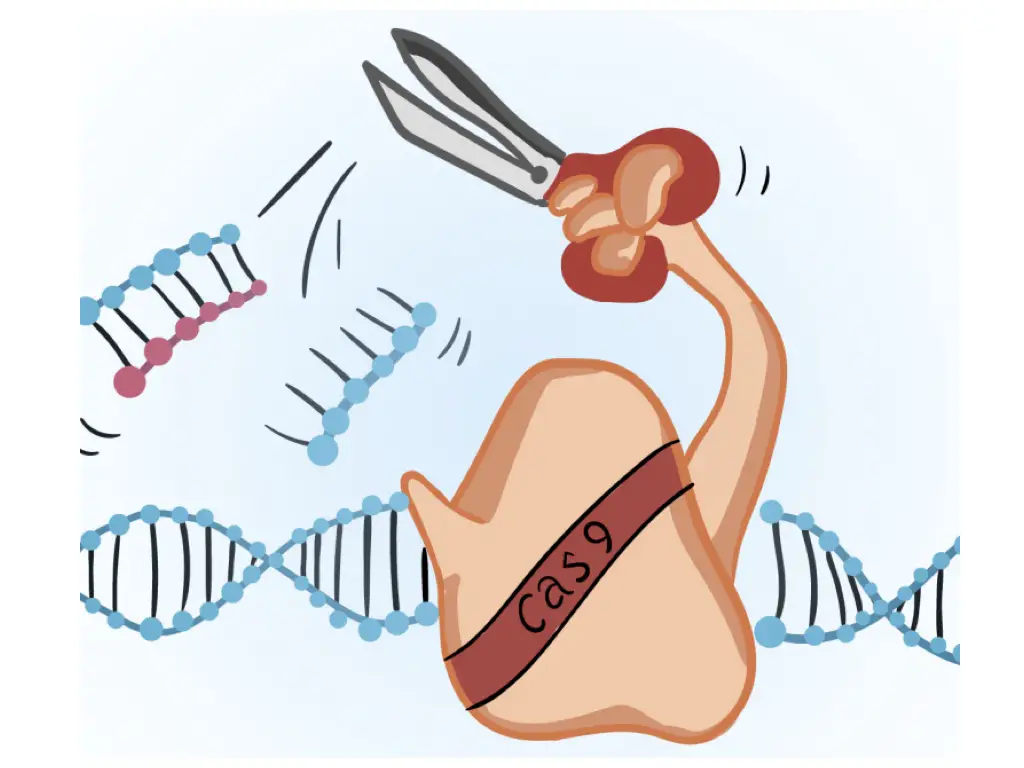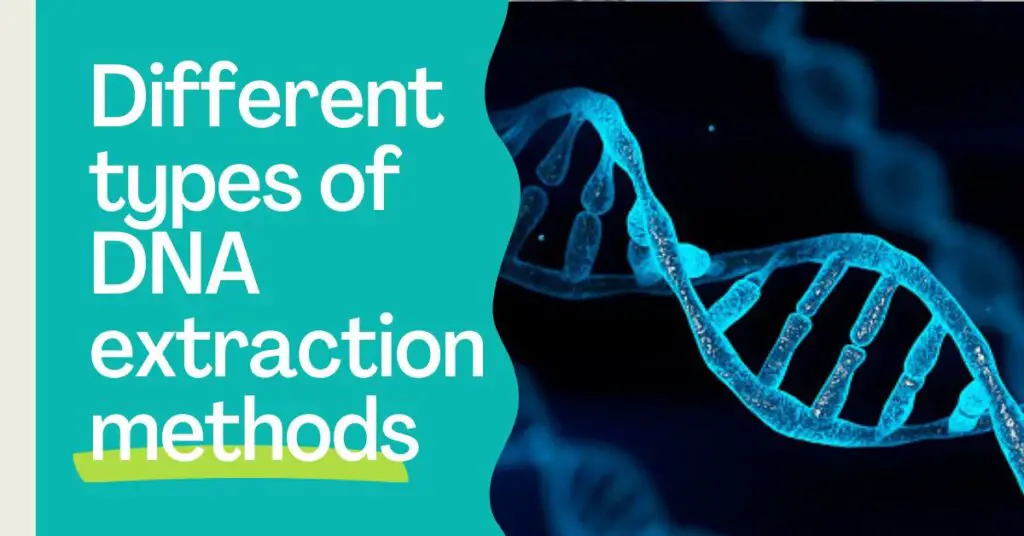“RNase- acronym as ribonuclease is the class of nuclease used to inhibit the activity of the RNA during DNA extraction. Two types of ribonucleases are endoribonuclease and exoribonuclease.”
Interesting information:
- DNA and RNA are two types of nucleic acids in which DNA is present in all eukaryotes and prokaryotes except the retrovirus.
- Nucleases either DNase or RNase are enzymes that cleave DNA and RNA, respectively. Endoculease and exonuclease are two common categories.
- RNase play important role in DNA isolation.
The significantly important process in molecular genetics is DNA extraction and RNA extraction too. Isolating DNA from biological samples is indeed a challenging task. As the main aim of the extraction is to isolate pure and good quantity DNA, it isn’t possible all the time.
Many different methods of DNA extraction are good, indeed; though the use of enzymes such as proteinase K, RNase or both is pathbreaking research.
Common contaminants of DNA are the chemicals (like phenol) and RNA. Unfortunately, RNA as a contaminant is hard to remove and has a major impact on final results. So only extracting DNA isn’t actually fruitful, performers also have to remove contaminants as well.
Many ways exist in which alcohol washing is the best choice for a long time. But let me tell you that washing can’t help in removing the RNA if there. We need a strong player, some treatment or a solution to do so.
RNase, the ribonuclease having the power to cleave RNA and removes it from the final extracted DNA. But it negatively impacts the process of RNA isolation.
The present content is focused basically on the role of RNase in DNA extraction, but in addition, I will also explain its types, other applications and clinical uses. Also, I will explain how the RNase creates problems during RNA isolation and how to overcome it.
Key Topics:
What is RNase?
Three major RNA types are common; messenger RNA (mRNA), transporter RNA (tRNA) and ribosomal RNA (rRNA). Besides, other smaller RNA are siRNAs helps in regulating gene regulation.
The function of RNA is to form a protein, however, not all RNAs convert into protein and therefore it is necessary to clear unused RNAs from cells. Our RNase enzyme functions to degrade the unused RNA and removes it.
Moreover, it also degrades the foreign mRNA too for protecting our body. It can cleave our own RNAs too, but mechanisms like polyadenylation or poly-A tailing and 5’ capping protect useful RNA.
Types of RNase:
To understand how the RNase works during DNA extraction, we need to understand some basics behind it. Broadly, the RNase family nuclease is classified into endoribonuclease and exoribonuclease.
RNase H: This nuclease works during the DNA replication and removes RNA primer or RNA from the RNA/DNA duplex. The hydrolytic mechanism is responsible for the cleave.
RNase P is a type of ribozyme that processes the tRNA, removing the leader sequences from the 5’ end of pre-tRNA.
RNase A: RNase is used in the research lab and DNA extraction. It cleaves the cellular RNA (all types) which are not required for cells. It especially cleaves the single-stranded cellular RNAse.
It is also used in plasmid and genomic RNA isolation and preparation, mutation mapping, reparation of RNA from recombinant proteins and nuclease assays.
Bovin pancreatic RNase A is the best example of a commercially available RNase.
“Fun fact: RNase A is a digestive enzyme secreted by the pancreas and cleaves the RNA in our food.”
RNase III: cleaves especially the 16s rRNA and 23s rRNA from the transcribed RNA operon in prokaryotes. It is present in the prokaryotes.
RNase T1: it cleaves the 3’ end of the unpaired G residues of the RNA.
RNase T2: cleaves all A, U, G and C residues from the 3’ end.
RNase V: cleave polyadenine and polyuridine RNAs.
RNase G: Cleave the 5s rRNA and helps in chromosome separation and cell division.
Other uncommon RNase are;
RNase E: It’s RNase of plants causes SOS response in bacteria during DNA damage.
RNase PhyM: Cleaves single-stranded RNA of unpaired A and U at 3’ end.
Exoribosenuclease I: cleave single-stranded RNA from 5’ to 3’ end.
Exoribonuclease II: functions same as the exoribonuclease I.
PNPase: works are nucleotidyltransferase and exonuclease, cleaves RNA from ends.
RNase D: helps in 3’ to 5’ processing of tRNA.
RNase T: maturation of stable RNAs.
Oligoribonuclease: cleaves oligonucleotides to mononucleotides.
| Endoribonuclease | Exoribonuclease |
| RNase A, RNase H, RNase III, RNase L, RNase P, RNase PhyM, RNase T1, RNase T2, RNase U2, RNase V, RNase E and RNase G. | PNPase, RNase PH, RNase R, RNase D, RNase T, Exoribonuclease I, exoribonuclease II and oligo-ribonuclease I. |
The function of RNase:
The normal function of cellular RNA is to cleave any RNAs either foreign or own. Some of the functions are;
Clearing unused and unprocessed cellular RNA.
Protects cell from foreign RNAs
Included in biological processes like self-incompatibility, plant flowering and angiogenesis.
RNase in the DNA extraction:
Now let’s discuss the present article’s major topic, how and why the RNase is required during RNA isolation?
As we discussed, RNA is the common contaminant of DNA and hard to identify and remove. RNase like the commercially available RNase A is employed to cleave cellular and other kinds of RNA from a sample.
At the molecular level, the catalytic activity of it starts when it recognizes the residue or RNA and starts cleaving it. Disrupting the phosphodiester bonds between the adjacent nucleotides of RNA makes it cleavable.
It cuts the phosphodiester bond between the 5’ ribose end and 3’ of the adjacent pyrimidine nucleotide. The final 2’, 3’- cyclic phosphate is hydrolyzed and removed by centrifugation.
RNase solution for DNA extraction is commercially available and used soon after cell lysis. The only 10microliter of solution required.

How to use RNase in DNA extraction?
Dissolve 200μl in TE buffer at pH 8.0.
Add 10microliter or 1unit/microliter of RNase A and incubate the sample for 1 hour at 37C.
Add an equal volume of 70% ethanol to equal volume along with 1/10 volume of sodium acetate (3M).
Mix well to gel pellets of DNA.
Centrifuge the sample at 10,000 rpm, remove supernatant and collect the pellets.
Air dry pellets and dissolve in TE buffer.
Run the sample on agarose gel along with the non-RNase treated control.
RNase in the RNA extraction:
When we talk about DNA extraction, RNase is useful and tolerable but when we talk about RNA extraction, it produces a problem, a big problem! And henceforth is intolerable.
Put simply, RNase cleaves RNA and therefore we can’t get a cumulative amount of RNA in RNA isolation. To extract pure RNA, not DNA and removes DNA and other proteins is the aim of RNA isolation.
RNase is more common than DNase, even are present in the environment and on our hands or even on the workbench. And this is the reason, isolating RNA is the toughest task and seeks expert attention.
Using DNase during the process helps to remove DNA but suppressing the common RNase activity is hard.
RNA isolation is performed mainly to study gene expression and gene silencing studies. Expert hands, a contamination-free environment and special care are required to isolate the pure RNA.
Now, how come this problem can be solved? I have a couple of suggestions. RNase can be suppressed by
Sterilizing all the plastic and glasswares and workbench before isolation, washing all the utilities with the DEPC water and separating RNA isolation utilities with DNA isolation one.
But from my personal experience let me tell you that these preparations aren’t enough to stop the champ. You need to use inhibitors, the RNA inhibitors to stop the catalytic activity of the ribonuclease.
What are RNase inhibitors?
The RNA inhibitors are specialized enzymes or more precisely, recombinant proteins that help to suppress the activity of RNase in the experiments as RNase are present everywhere.
hPRI, RNasin by Promega and SUPERase are three choices. Usually, 1 unit/microliter concentration is enough to get good results.
Technically, the RNase inhibitors are larger, acidic and leucine amino acid-rich synthetic/ recombinant enzymes that form a tight complex with the RNase and stop its activity.
Monitoring the RNase activity:
In either the experiment of DNA extraction or RNA extraction, monitoring the RNase activity helps to achieve accuracy in the experiment. Now how can we do it?
Simply by observing the Agarose gel electrophoresis results! It’s the simplest technique, however, needs the expertise to perform, let me tell you.
Agarose gel electrophoresis technique relies on the charge of particles, nucleic acid is negatively charged and migrates to positive charge through definite pores. I ain’t going into the technical detail of agarose gel electrophoresis. You can read the related articles by searching on our blog.
RNAs are smaller in size than the DNA, meaning that when we run, a gel RNA runs behind the DNA. Both are a kind of nucleic acids and therefore stained by EtBr.
RNA bands are observed behind the DNA. So if the DNA sample is contaminated with the RNA, a smear beloves the DNA is seen. Contrary, if the RNA sample is contaminated with the DNA, a smear above the RNA bands is seen.
In another condition, when the RNAs are present during the RNA isolation, fragmented RNAs are seen as a large smear in the gel. So the activity of RNase can be evaluated like this,
| Agarose gel | Observation | RNase activity |
| DNA gel | Smear behind DNA bands | Negative |
| DNA gel | No smear behind DNA bands | Positive |
| RNA gel | Large smear in the gel | Positive |
| RNA gel | No smear in the gel | Negative |
Analyzing the gel electrophoresis results helps to know,
- Is RNase working?
- Is the quantity sufficient?
- Is it hindering the experiment?
- Should we have to change the RNase?
- Is the sample contaminated?
Wrapping up:
Using RNAase in the DNA extraction can be a good decision, however, we can also do extraction without using it and it is a cost-effective option too. So if have some expertise, you can avoid it. Notedly, to achieve good quality DNA during the plant DNA extraction, use RNase as well as Proteinase K too.
Subscribe to our weekly newsletter for the latest blogs, articles and updates, and never miss the latest product or an exclusive offer.



